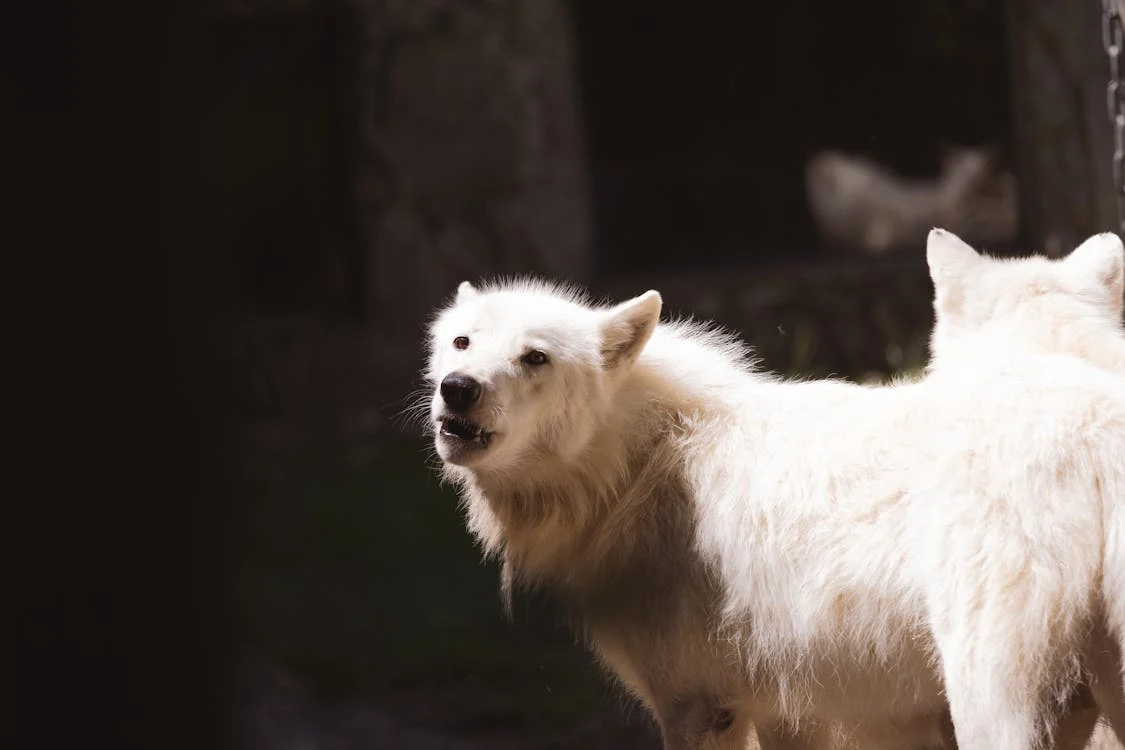Wolves, one of the most resilient and adaptable species in the animal kingdom, have thrived in some of the harshest environments on Earth for thousands of years. From the frozen tundra of the Arctic to the dry, rocky mountains of the American West, wolves exhibit a range of survival strategies that enable them to endure extreme conditions. Their adaptability is rooted in physical, behavioral, and social adaptations that have evolved over generations, making them expert survivors.
Physical Adaptations
- Thick Fur and Insulation
One of the most crucial physical adaptations wolves possess is their dense, double-layered fur coat. The outer layer, or guard hair, repels moisture, while the inner layer provides insulation to trap body heat. This fur allows wolves to survive in temperatures as low as -40°F (-40°C), especially in the Arctic, where conditions can be unforgiving. Wolves also grow a thicker winter coat, which they shed in spring as temperatures warm. - Large Paws for Traversing Snow
Wolves’ paws are another significant adaptation. Their feet are large and covered with fur, acting like snowshoes that help them walk on deep snow without sinking. The pads of their paws also have a rough texture, giving them better grip on slippery surfaces like ice. This adaptation is vital for wolves living in the tundra or mountainous regions where snow and ice cover the ground for much of the year. - Efficient Metabolism and Fat Storage
Wolves have a highly efficient metabolism that allows them to go for extended periods without food, sometimes for days or even weeks. When prey is scarce, their bodies can survive on fat reserves, which are built up during periods of abundance. This metabolic adaptation is crucial for surviving in environments where food sources fluctuate dramatically, such as the boreal forests and deserts. - Powerful Sense of Smell and Hearing
Wolves possess highly developed senses, particularly smell and hearing, which help them detect prey from great distances. Their sense of smell is around 100 times more sensitive than that of humans, enabling them to pick up the scent of prey from miles away. Their keen hearing allows them to detect the movements of potential prey or other dangers in their surroundings, even in dense forests or rugged terrain.
Behavioral Adaptations
- Cooperative Hunting
Wolves are highly social animals that rely on cooperative hunting to increase their chances of success. Living and hunting in packs allows wolves to take down large prey, such as elk, deer, and moose, which they would not be able to catch on their own. This pack behavior is essential for survival in environments where smaller prey is scarce, and larger animals are necessary for sustenance. - Territory Marking and Defense
Wolves are territorial animals and often maintain large territories, sometimes up to 1,000 square miles, depending on prey availability and population density. They mark their territory with scent markers to warn other wolf packs and predators to stay away. By establishing and defending a vast area, wolves ensure they have access to enough resources to sustain the pack, particularly in environments where food is limited. - Nomadic Behavior and Migration
When prey is scarce, wolves may adopt a nomadic lifestyle, traveling long distances in search of food. This behavior is especially common in wolves living in the tundra or desert environments where prey species are sparse and widely dispersed. In areas with harsh winters, some wolf populations may also follow the seasonal migration of prey animals, such as caribou, ensuring a more reliable food source throughout the year.
Social Adaptations
- Strong Pack Structure
Wolves live in highly organized social structures, known as packs, which are typically composed of a dominant breeding pair (the alpha pair), their offspring, and other subordinate wolves. The pack operates as a cohesive unit, with each member contributing to the group’s success. This social organization is key to their survival, as it allows for efficient hunting, protection from predators, and care of young wolves. - Raising Pups Cooperatively
One of the wolves’ most important survival strategies is cooperative breeding and care of the young. All pack members, not just the parents, help raise the pups. This includes providing food, protection, and teaching the pups essential survival skills. This cooperative behavior ensures the survival of the next generation, even in environments where resources are limited and the risks are high. - Communication and Coordination
Wolves rely on complex communication methods, including vocalizations like howls, body language, and scent marking, to coordinate pack activities and maintain social bonds. Howling helps wolves communicate over long distances, especially in dense forests or open tundra where visual cues are limited. This communication is essential for coordinating hunts, defending territory, and keeping the pack together, particularly in vast or challenging landscapes.
Adaptation to Human Encroachment
As human activity increasingly impacts wolf habitats, wolves have demonstrated remarkable adaptability in response to new challenges. In some regions, wolves have shifted their hunting patterns to avoid humans, becoming more nocturnal. They have also learned to live closer to human settlements while avoiding direct encounters, demonstrating their ability to adapt to changing environments.
Conclusion
Wolves are a testament to nature’s ability to adapt and thrive under challenging conditions. Through physical, behavioral, and social adaptations, they have carved out a niche in some of the world’s most inhospitable environments. Their ability to work together as a pack, combined with their physical resilience and keen survival instincts, ensures that wolves remain one of the top predators in their ecosystems, despite the often harsh realities of the wild. As environmental changes and human encroachment continue to impact wolf populations, their ability to adapt will remain crucial for their survival.

